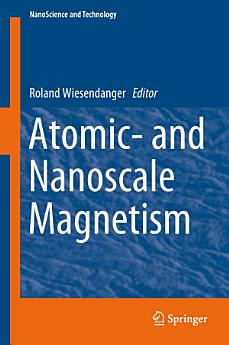Atomic- and Nanoscale Magnetism
Kuhusu kitabu pepe hiki
Kuhusu mwandishi
Roland Wiesendanger studied physics at the University of Basel, Switzerland, where he received his Ph.D. in 1987 and his habilitation degree in 1990, working in the field of scanning tunnelling microscopy and related techniques. In 1992 he accepted a Full Professor position at the University of Hamburg, related to the launch of the Microstructure Advanced Research Center Hamburg. In Hamburg, Roland Wiesendanger initiated the Center of Competence in Nano-scale Analysis, the Interdisciplinary Nanoscience Center Hamburg, the Collaborative Research Center of the German Research Foundation entitled "Magnetism from single atoms to nanostructures", and the Free and Hanseatic City of Hamburg Cluster of Excellence "Nanospintronics".
Since the late 80s, Roland Wiesendanger has pioneered the technique of spin-polarized scanning tunnelling microscopy (SP-STM) and spectroscopy, which allowed the first real-space observation of magnetic structures at the atomic level. He also contributedsignificantly to the development of magnetic force microscopy (MFM) and magnetic exchange force microscopy (MExFM).
Roland Wiesendanger is author or co-author of about 600 scientific publications and 2 textbooks, and editor or co-editor of 8 monographs. He has received numerous scientific awards and honours, including the American Vacuum Society’s Nanotechnology Recognition Award in 2010, the first Heinrich Rohrer Grand Medal and Prize in 2014, and the Julius Springer Prize for Applied Physics in 2016. He is an elected member of the German Academy of Sciences "Leopoldina", the Hamburg Academy of Sciences, the German Academy of Technical Sciences "acatech", the Polish Academy of Sciences, and the European Academy of Sciences "EURASC". Additionally, he is a Fellow of the American Vacuum Society and the Surface Science Society of Japan. In 2015 he received an Honorary Doctor degree from the Technical University of Poznan.






